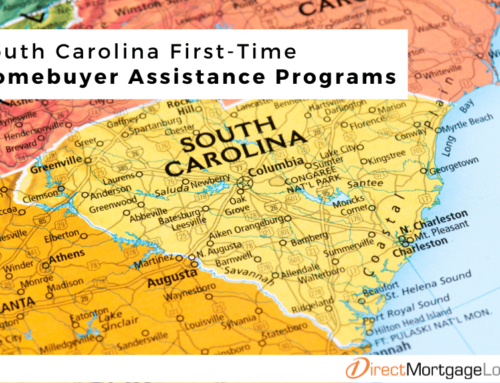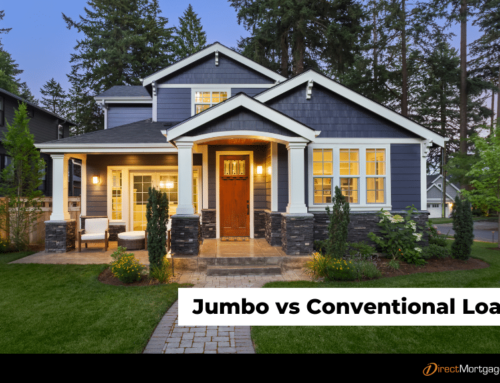Considering a home revamp but short on cash? Home improvement loans could provide the funds you need for renovations, repairs, and upgrades. This guide explores different loan options, what projects they can cover, and how to apply. Keep reading to learn more!
Subscribe to our blog to receive notifications of posts that interest you!
What is a home improvement loan?
A home improvement loan is a type of financing which helps homeowners pay for repairs, renovations, and upgrades to their property. These loans can be used for a variety of project — from essential fixes like roof replacement to cosmetic upgrades like kitchen remodels or bathroom additions.
There are different types of home improvement loans. Some provide a lump sum payment for the entire project upfront, while others work more like credit cards, allowing you to access funds as needed throughout the renovation.
How do home improvement loans work?
A home improvement loan is specially designed to help you make improvements to your house. These loans provide a specific pool of funds to cover the costs associated with upgrades, renovations, or repairs to your property. Home improvement loans come in two main structures:
- Fixed-Sum Loan: This option acts like an advance payment for your project. You receive the entire loan amount upfront, allowing you to pay contractors, purchase materials, and manage project costs directly.
- Line of Credit: A line of credit works similarly to a credit card. The lender approves a maximum borrowing limit, but you only access the funds you need as the project progresses. This can be beneficial for projects with unforeseen costs or those that unfold in stages.
Home improvement loans come with varying requirements and eligibility criteria. Some loans may require your house as collateral, while others might not. Understanding these differences can be crucial when choosing the right loan for your project.
Types of Loans for Home Improvements
There are various types of loan options worth consideration for home improvements. Here is a brief overview of some of the most common options.
Cash Out Refinance
A cash out refinance is a type of mortgage refinancing which could allow homeowners to borrow money against their home equity. You could do this by taking out a new loan which is greater than your existing mortgage. With a cash out refinance, you would get cash back at closing. This money could then be used for any purpose, such as making home improvements or repairs.
Home Equity Loans
A home equity loan allows you to use the equity you’ve built up in your home for various financial needs, such as making home improvements. The loan amount is based on the difference between your home’s current market value and your remaining mortgage balance. The funds would be received as a lump sum, and then you would repay the loan in fixed monthly installments over a set loan term, like a traditional mortgage.
Home Equity Line Of Credit (HELOC)
A Home Equity Line of Credit (HELOC) is a revolving line of credit which is secured by the equity in your home. With a HELOC, you could be provided with a credit limit to access over a set draw period, usually around 10 years. During this draw period, you are only required to make interest payments on the amount you have withdrawn. This flexibility allows you to access funds as needed for your project, rather than receiving a lump sum upfront.
HomeStyle Renovation Loan
Fannie Mae’s HomeStyle renovation loan could allow you to combine the costs of buying or refinancing a home, along with renovation expenses, into a single loan. Unlike traditional financing options, you pay for the renovations as they are completed, rather than in a lump sum upfront. This could help you manage your finances better throughout the project, ensuring you have funds available for each stage of the renovation.
FHA 203K Loan
An FHA 203(k) loan is a government-backed mortgage option which helps borrowers combine the cost of purchasing and renovating a fixer-upper home into a single loan. This simplifies the financing process, eliminating the need for a separate renovation loan. It could be a good option if the home you’re moving into requires repairs or upgrades before moving in.
Freddies Mac’s Choice Renovation
Freddie Mac’s CHOICERenovation program combines the cost of purchasing or refinancing a home with the expenses of renovation. This program considers the future value of the home after the renovations. This means that borrowers could potentially borrow more to cover larger upgrades, all in one loan. This simplifies the process and saves the hassle of managing multiple loans. Additionally, it could also reduce closing costs compared to taking out separate loans.
Which type of home improvement financing should you choose?
When you’re thinking about financing for home improvements, it’s important to think about your own needs and factors. Here are a few things to consider:
- Project Scope & Cost: Determine the total cost of your renovation, and whether the project will require a fixed amount, or if you anticipate variable expenses. Knowing your budget could help narrow down your loan options.
- Home Equity: Cash-out refinances, HELOCs, and home equity loans all require built-up equity in your home. This means the market value of your property should be higher than your remaining mortgage balance.
- Cash Flow Management: Decide if you need the entire renovation amount upfront, or if access to funds as needed would be more manageable. HELOCs offer flexibility for ongoing projects, while fixed loans provide a lump sum.
- H3: Home Improvement Loan Rates
To determine your home improvement loan rate, lenders consider factors such as your credit score, down payment, and debt-to-income ratio. For a personalized analysis and rate quote, reach out to one of our Loan Officers. They’ll provide expert guidance tailored to your unique financial situation.
What can you use a home improvement loan for?
You could use a home improvement loan for a variety of upgrades and remodels. This includes central heating and air, plumbing, electrical systems, flooring, as well as bathroom, kitchen, and home office remodels. Keep in mind that allowable improvements may vary depending on the specific loan program.
Pros and Cons of Home Improvement Loans
If you’re considering a home improvement loan, it’s important to review the advantages and disadvantages before deciding if this option is right for you.
Home Improvement Loan Pros
Here are a few of the advantages of a home improvement loan:
- Add Value to Your Home: Many renovations, like kitchen remodels or bathroom upgrades, could significantly increase your home’s value. This could translate to a bigger return on investment if you plan to sell someday.
- Potential Tax Deductions: In some cases, the interest you pay on a home improvement loan could be tax-deductible. It’s always wise to consult with a tax advisor to see if your specific project qualifies.
- Finance Large Projects: Home improvement loans allow you to tackle bigger projects which may take longer to save for.
- Fixed Monthly Payments: Home improvement loans typically come with fixed monthly payments. This makes budgeting predictable and easier to manage compared to fluctuating costs which could arise during a project.
Home Improvement Loan Cons
Despite the advantages, there are some potential drawbacks to consider:
- Potential for Higher Interest Rates: Interest rates on home improvement loans could be higher than other traditional financing options. This means you could end up paying more for the project overall versus saving up funds for the project.
- May Require Collateral: Some home improvement loans, like a cash-out refinance and a Home Equity Line of Credit (HELOC), use your home’s equity as collateral. If you default on the loan, the lender could foreclose on your property, meaning you could lose your home.
How To Get A Home Improvement Loan
While each type of home improvement loan will have its own set of eligibility requirements, here is a general overview of the steps you can take:
- Speak with a Loan Officer: Connect with a Loan Officer to discuss your home improvement goals and your financial situation.
- Determine Cost & Loan Type: Calculate the amount you will need for the home improvement project and decide on the type of loan that best suits your needs. Your Loan Officer could help you understand the various options available.
- Gather Documents: Before submitting your application, gather all the necessary documents you will need to provide when applying for the loan.
- Submit an Application: Once you have all your documents ready, you can proceed to apply for Pre-Approval.
Home Improvement Loan FAQ’s
What credit score do you need for a home improvement loan?
The minimum credit score required for a home improvement loan varies depending on the lender and the specific loan product. Typically, lenders prefer borrowers with a higher credit history to reduce risk. As a result, individuals with higher credit scores may qualify for better interest rates and loan terms.
Can you get a home improvement loan with a mortgage?
You could obtain a home improvement loan even if you already have a mortgage on your property. There are two main loan options for financing improvements alongside a mortgage; a home equity loan or a home equity line of credit (HELOC). HELOCs offer more flexibility for accessing funds as needed during your project, while home equity loans provide a lump sum upfront.
What is the average length of a home improvement loan?
The typical term length for a home improvement loan varies depending on the type of loan and the lender. For home equity loans, the term is usually 5 to 30 years, while for personal loans, it is typically 2 to 5 years. Home improvement loans such as home equity loans typically have longer terms because they offer larger loan amounts.
Is a home improvement loan tax deductible?
You can deduct the interest paid on home equity loans and HELOCs secured by your primary or secondary residence if the funds are used for substantial improvements. This tax benefit does not apply to traditional unsecured personal loans. It’s best to consult with a tax advisor to determine if your home improvement loan qualifies for a tax deduction.
How can I find home improvement lenders near me?
Direct Mortgage Loans offers a variety of home improvement loan options to fit your individual needs. Speak with one of our Loan Officers to learn which option could be best for you!






Leave A Comment
You must be logged in to post a comment.